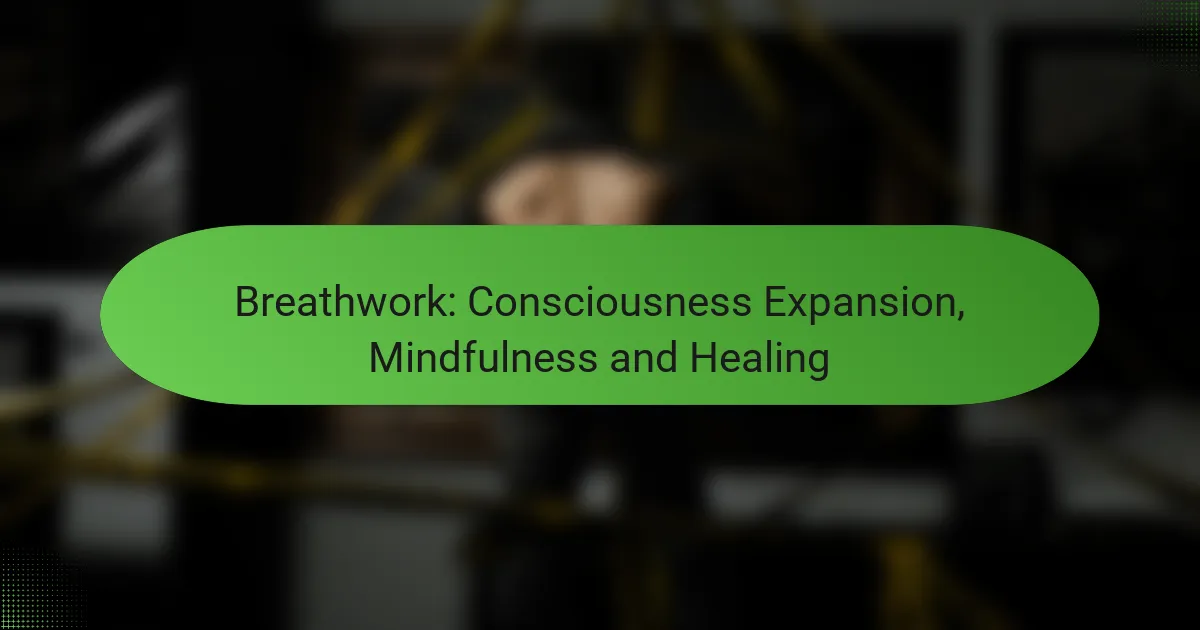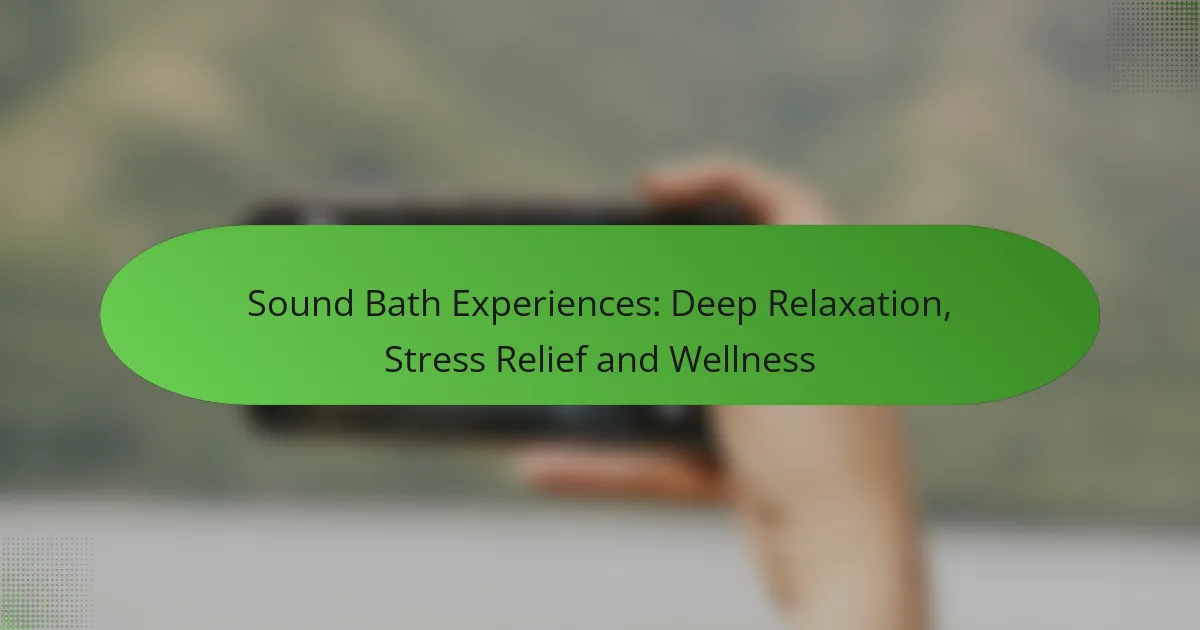Breathwork is a powerful practice that enhances consciousness and promotes mindfulness through specific breathing techniques. By engaging in breathwork, individuals can access altered states of awareness, facilitating healing and personal growth while improving emotional regulation and stress relief. Techniques such as Holotropic breathwork, the Wim Hof method, and Transformational breath offer unique pathways to deepen self-awareness and foster a stronger connection to one’s thoughts and feelings.

How Can Breathwork Enhance Consciousness?
Breathwork can significantly enhance consciousness by promoting deeper self-awareness and mindfulness. Through specific breathing techniques, individuals can access altered states of consciousness that facilitate healing and personal growth.
Increased self-awareness
Breathwork encourages individuals to focus on their breath, which can lead to heightened self-awareness. By tuning into their breathing patterns, people can identify emotional triggers and habitual responses, fostering a deeper understanding of themselves.
Practicing breathwork regularly can help individuals recognize their thoughts and feelings without judgment. This awareness allows for more intentional choices in daily life, enhancing personal growth and emotional well-being.
Heightened emotional regulation
Engaging in breathwork can improve emotional regulation by activating the parasympathetic nervous system, which promotes relaxation. This physiological response helps individuals manage stress and anxiety more effectively.
For example, techniques such as diaphragmatic breathing can calm the mind and body, making it easier to respond to emotional challenges with clarity rather than reactivity. Regular practice can lead to a more balanced emotional state over time.
Improved mental clarity
Breathwork can enhance mental clarity by increasing oxygen flow to the brain, which supports cognitive function. Clearer thinking often results from the relaxation and focus achieved through various breathing exercises.
Incorporating breathwork into daily routines can help individuals sharpen their concentration and decision-making skills. Simple practices, like taking a few deep breaths before a task, can significantly improve focus and productivity.
Expanded perception of reality
Through breathwork, individuals may experience an expanded perception of reality, allowing them to explore altered states of consciousness. This exploration can lead to insights and a greater understanding of one’s place in the world.
Techniques such as holotropic breathwork can induce profound experiences that challenge conventional perceptions, fostering a sense of connection with others and the universe. Engaging in these practices can open doors to new perspectives and transformative experiences.

What Are the Benefits of Breathwork for Mindfulness?
Breathwork offers various benefits for mindfulness, including enhanced awareness, emotional regulation, and stress relief. By focusing on breath patterns, individuals can cultivate a deeper connection to their thoughts and feelings, promoting overall mental well-being.
Stress reduction
Breathwork techniques can significantly reduce stress levels by activating the body’s relaxation response. Practices such as deep diaphragmatic breathing help lower cortisol levels, which are often elevated during stressful situations. Regular engagement in breathwork can lead to a more resilient mindset and improved emotional stability.
To effectively reduce stress through breathwork, consider incorporating techniques like the 4-7-8 method, where you inhale for four seconds, hold for seven, and exhale for eight. Practicing this for just a few minutes daily can lead to noticeable improvements in stress management.
Enhanced focus
Breathwork can enhance focus by increasing oxygen flow to the brain, which supports cognitive function and clarity. Techniques that involve controlled breathing can help clear mental fog and improve concentration, making it easier to tackle tasks and make decisions.
For optimal focus, try the box breathing technique: inhale for four seconds, hold for four, exhale for four, and hold again for four. Practicing this for five minutes can sharpen your attention and boost productivity.
Improved relaxation response
Engaging in breathwork promotes an improved relaxation response, which counteracts the body’s stress reactions. This practice encourages a state of calmness and tranquility, making it easier to unwind after a busy day or during moments of anxiety.
To enhance your relaxation response, consider practicing breathwork in a quiet space, focusing on slow, rhythmic breathing. Aim for sessions lasting 10-15 minutes, allowing your body and mind to fully embrace the calming effects of breath awareness.

Which Breathwork Techniques Are Most Effective?
Several breathwork techniques are recognized for their effectiveness in promoting mindfulness, healing, and consciousness expansion. Holotropic breathwork, the Wim Hof method, and Transformational breath are among the most popular approaches, each offering unique benefits and practices.
Holotropic breathwork
Holotropic breathwork involves accelerated breathing patterns combined with evocative music to facilitate deep emotional and psychological exploration. This technique aims to access altered states of consciousness, allowing participants to confront and process unresolved issues or traumas.
During a session, participants typically lie down and breathe rapidly for an extended period, often lasting several hours. It is essential to have a trained facilitator present to guide the experience and ensure safety. Considerations include potential emotional releases and the need for a supportive environment.
Wim Hof method
The Wim Hof method combines specific breathing techniques, cold exposure, and meditation to enhance physical and mental resilience. This practice focuses on controlled hyperventilation followed by breath retention, which can lead to increased energy levels and improved focus.
Practitioners often start with a series of deep breaths, followed by holding the breath for a short duration. Regular practice can enhance immune function and reduce stress. However, it is crucial to avoid practicing in water or while driving due to the risk of lightheadedness.
Transformational breath
Transformational breath emphasizes conscious breathing patterns to release emotional blockages and promote self-awareness. This technique often incorporates sound, movement, and affirmations, creating a holistic approach to healing and personal growth.
Sessions typically involve guided breathing exercises that encourage participants to connect with their emotions and physical sensations. It is beneficial to practice in a safe space, preferably with a certified instructor, to maximize the experience and facilitate emotional release. Regular practice can lead to lasting changes in mindset and emotional well-being.

How to Choose a Breathwork Practitioner?
Selecting a qualified breathwork practitioner is crucial for a safe and effective experience. Focus on their qualifications, experience, and client feedback to ensure you find someone who aligns with your needs and goals.
Check qualifications and certifications
Certifications from reputable organizations can indicate a level of professionalism and adherence to ethical standards. In some regions, practitioners may also be required to have specific licenses, so check local regulations.
Consider experience and specialties
Experience plays a significant role in the effectiveness of breathwork sessions. Seek practitioners who have substantial experience, ideally with a focus on the specific type of breathwork you are interested in, such as transformational or therapeutic breathwork.
Some practitioners may specialize in working with certain populations, such as trauma survivors or athletes. Understanding their specialties can help you find someone who is best suited to address your unique needs.
Read reviews and testimonials
Client reviews and testimonials provide valuable insight into a practitioner’s effectiveness and approach. Look for feedback on their website or platforms like social media and wellness directories.
Pay attention to comments about the practitioner’s demeanor, the atmosphere of their sessions, and the overall impact on clients’ well-being. A practitioner with consistently positive reviews is likely to provide a supportive and effective experience.

What Is the Role of Breathwork in Healing?
Breathwork plays a significant role in healing by promoting relaxation, enhancing self-awareness, and facilitating emotional release. Through various breathing techniques, individuals can access deeper states of consciousness, which can lead to transformative healing experiences.
Facilitates emotional release
Breathwork facilitates emotional release by allowing individuals to connect with and express suppressed feelings. Techniques such as circular breathing or deep diaphragmatic breathing can help unlock emotions that may be trapped in the body, leading to cathartic experiences.
During breathwork sessions, participants often report a range of emotions, from joy to sadness, as they process their feelings. This emotional release can be crucial for mental well-being, as it helps to clear emotional blockages and promote a sense of relief and clarity.
To maximize emotional release during breathwork, practitioners should create a safe environment, free from distractions. It’s beneficial to set an intention for the session and to remain open to whatever emotions arise, allowing the breath to guide the experience. Common pitfalls include trying to control the process or resisting feelings, which can hinder the healing journey.



